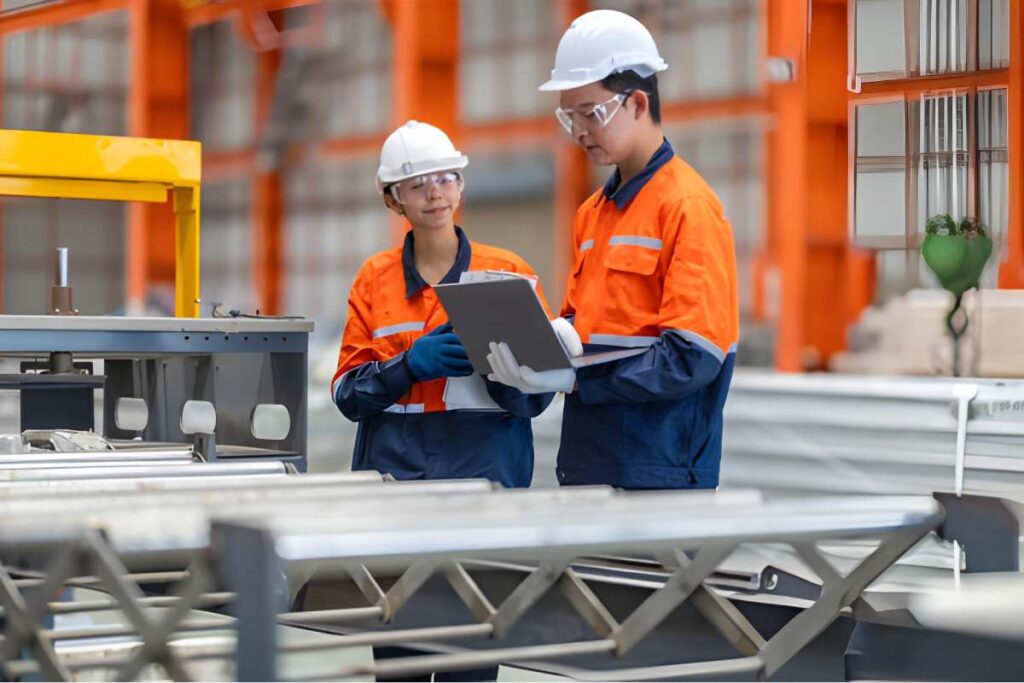Every environment that hosts movement—whether vehicles, machinery, or people—depends on one invisible force: control. Control of speed, direction, impact, and reaction. Yet true safety isn’t about restriction; it’s about intelligent design that enables freedom without chaos. When protection is built with precision and foresight, it doesn’t interrupt workflow—it refines it. That’s where expertise transforms everyday infrastructure into systems of safety and sustainability.
Table of Contents
1. Traffic Management and Control: Flow of Motion Safety Equipment
Every operation begins with movement—and without control, movement becomes risk. Whether it’s guiding cars through carparks or trucks through logistics bays, traffic management safety equipment defines rhythm and order through speed, space demarcation, and enhanced visibility. Professionals don’t just install these safety signs—they choreograph.
Critical equipment for movement control includes;
- Bollard Lights – Restrict vehicle access and safeguard assets.
- Speed Humps / Rumble Bars – Regulate driving behavior, forcing deceleration.
- Traffic Cones and Markers – Adapt routes dynamically for temporary changes.
- Line Marking (Paints/Tapes) – Visually map lanes, bays, and directions.
Each element works as part of a living system—fluid enough for movement, firm enough for control. It’s not about slowing vehicles; it’s about maintaining momentum safely and intelligently, where precision guides every turn.
2. Impact and Asset Protection: Error Mitigating Equipment
Impact control is where structure meets motion—where one careless turn can translate into thousands in repair. Intentionally designed equipment mitigate the consequences of human error such as misjudged turns, parking too close, or pedal errors.
Intelligent safety design stops impact before it becomes an incident. Such signs include
- Wheel Stops – Halt vehicles before overshooting parking spaces.
- Corner & Wall Guards – Defend columns and edges from scrapes and collisions.
- Guard Rails & Safety Barriers – Separate vehicles from walkways or critical zones.
- Dock Bumpers – Absorb truck impacts during loading and unloading.
Experts treat these as strategic placements, not generic add-ons. They calculate force, angle, and trajectory to ensure every system absorbs energy effectively. What looks like simple hardware is actually engineered foresight—a physical blueprint for damage prevention and structural longevity.
3. Warning and Visibility: Perception and Awareness Improving Equipment
Awareness creates order and saves more lives than reaction. When drivers and pedestrians see clearly, accidents rarely happen. Critical designs help make hazards, restrictions, and directional guidance immediately obvious to drivers and pedestrians. That’s why professional safety systems bear features that help to communicate instantly, even without words. Examples of awareness enhancing signs are;
- Domes & Convex Mirrors – Eliminate blind spots and widen sightlines.
- Height Bars – Warn and physically restrict overheight vehicles.
- Road & Safety Signs – Regulate, direct, and caution with clear visual cues.
- Tactile Indicators – Enable navigation for visually impaired pedestrians.
However, each piece should meet color contrast standards and effective reflectivity distance. Each piece enhances perception and ensures no hazard goes unnoticed. Beyond the equipment itself, placement is everything—trained specialists understand light angles, human behavior, and flow patterns. The result is not just visibility but awareness by design—a subtle, intelligent layer of protection that guides instinctively.
4. Safety Access and Floor Solutions: Flow Compliance Enhancing Signs
Sometimes, safety begins with the ground beneath your feet. Inaccessible or uneven surfaces invite risk, but modern access systems transform those weak points into structural confidence. Such safety equipment focuses on addressing challenges posed by physical barriers, trip hazards, and slick surfaces. That ensures smooth, hazard-free, and compliant movement for all users—drivers, pedestrians, and those with mobility challenges—across different floor levels and surfaces.
- Ramps (Kerb, Wheelchair) – Bridge level changes for smooth and inclusive access.
- Cable Protectors – Organize and shield exposed wiring, preventing trips and wear.
- Safety Matting & Stair Nosing – Add anti-slip and tactile grip to walking areas.
Professionals approach these not as installations but as integrations—balancing gradients, textures, and traffic types. They design for endurance and inclusivity, ensuring that access isn’t just compliant but seamless. The best floors don’t just support weight; they support safety, flow, and equal mobility.
5. Emergency and First Response: Equipment Prioritizing Access to Critical Tools
When crisis strikes, seconds define stories, and an uninterrupted reaction is crucial. A prepared facility or system with vital and well-designed codes doesn’t panic—it responds with precision.
- Fire Extinguishers & Blankets for instant ignition control.
- AEDs & First Aid Kits placed with surgical logic.
- Spill Control Kits that prevent contamination from escalating.
- Dangerous Goods Cabinets that guard what could destroy.
Professionals align these systems with behavioral flow—so instinct meets access, not obstacles. Maintenance isn’t periodic—it’s perpetual. Because readiness isn’t luck; it’s discipline disguised as calm.
Ultimately, safety, when mastered, becomes an art of invisible intelligence. It’s not about compliance—it’s about foresight engineered into every barrier, surface, and sign. The businesses that thrive tomorrow are those that see safety as a strategy, not a cost. That’s the quiet difference between standard practice and specialized, sustainable progress.

